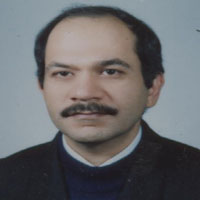Evaluation of Nitrogen Balance in Wheat (Triticum aestivum L.) Cropping Systems of Iran
The nitrogen budget or balance is often evaluated by comparing various nitrogen inputs and outputs in soil–crop systems. Research on nitrogen balance can provide more detailed information on the nitrogen cycle and its losses by integrating soil nitrogen processes with the total nitrogen budgets. There are restricted researches for evaluation of nitrogen balances in the cropping systems. It is clear that accurate measuring of each component of nitrogen budgets in relation to soil processes is difficult. Wheat (Triticum aestivum L.) is the main cereal crop cultivated in Iran. According to published data the average nitrogen application rates in wheat cropping systems of Iran is 120 kg.ha-1 but, the excessive use of fertilizer nitrogen is very common in wheat fields. It is estimated that in Iran, about 2.2 million ha of wheat production areas are under irrigation. Alike, there are limited studies on nitrogen dynamics, budgets and its losses pathways in wheat production systems of Iran. Such studies are essential to understand the nitrogen behavior and balance in wheat cropping systems. This research was carried out with the aim of evaluating nitrogen balance of wheat cropping systems with different climatic conditions over the country by using CENTURY model.
We used CENTURY model (Parton et al., 1994) to evaluate nitrogen dynamics and nitrogen balance in wheat cropping systems. For this purpose 14 wheat cropping system located in diverse climates were selected. Soil data was collected from Soil and Water Research Institute and weather data from 2000 to 2014 were obtained from Iran Meteorological Organization for 14 selected stations. The CENTURY model simulates the long-term dynamics of Carbon (C) and Nitrogen (N), for different Plant-Soil Systems. The model can simulate the dynamics of agricultural crop systems. The crop system of CENTURY have different plant production sub-models which are linked to a common soil organic matter sub-model .The soil organic matter sub-model simulates the flow of C, N through plant litter and the different inorganic and organic pools in the soil. CENTURY model runs in monthly time step with monthly precipitation (cm), monthly mean minimum and maximum temperature (°C), site latitude and longitude, sand, silt and clay (%), soil bulk density (g.cm-3), rooting depth (cm), C and N content of the top 20 cm of soil and management information such as planting date, first and last month of wheat growth, number and amounts of applied fertilizers, amount of irrigation water and its schedules are required. For model validation we used two statistical measures including Normalized Root Mean Squared Error (nRMSE), Willmott (1982) index of agreement (d value) and linear regression coefficients between actual and predicted values.
Results revealed that the highest nitrogen input in wheat cropping systems (9.5 - 12.5 g.m-2) was observed in Northwest, West and Southwest and the lowest (7.3 - 9.4 g.m-2) were in East and Southeast areas of the country. Also, nitrogen output plan in wheat cropping systems was similar to nitrogen input. In addition, stepwise regression analysis indicated that fertilizer application rate with partial coefficient of 97.33% and grain nitrogen with partial coefficient of 92.79%, respectively, were the most important variables in relation to nitrogen input and output in wheat cropping systems of Iran.
According to the results, it seems that in relation to nitrogen input, the role of agronomic management such as fertilizer application, coincidence of fertilizer application time with plant requirement and increasing nitrogen use efficiency (NUE) which is mostly dependent on agricultural management are important issues. But in the case of nitrogen outputs from wheat cropping systems, in addition to agronomic managements, use of improved cultivars with higher nitrogen uptake efficiency is more important.
- حق عضویت دریافتی صرف حمایت از نشریات عضو و نگهداری، تکمیل و توسعه مگیران میشود.
- پرداخت حق اشتراک و دانلود مقالات اجازه بازنشر آن در سایر رسانههای چاپی و دیجیتال را به کاربر نمیدهد.




